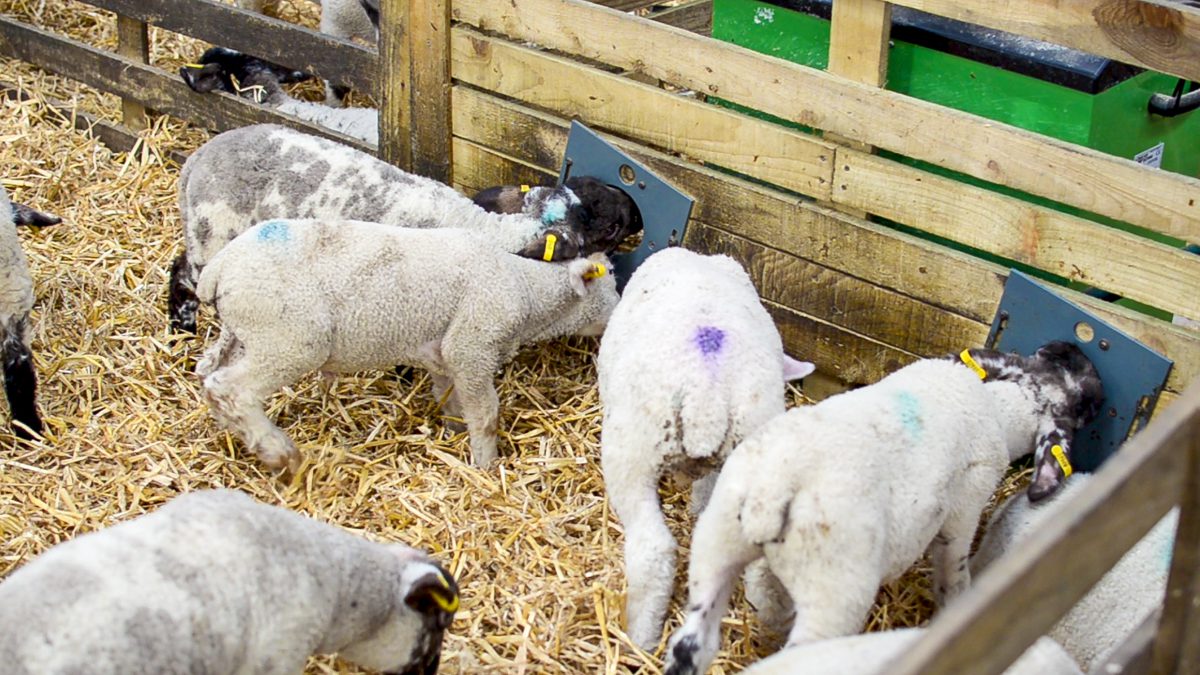One in five sheep producers are still cross fostering triplet lambs onto single-bearing ewes and about 30% are continuing to bottle feed orphans. This is despite the significant extra labour required to carry out both of these traditional rearing practices.
These results from an online survey with 350 sheep producers, carried out by Volac Lamlac in November 2017, suggest that only half of the market is taking advantage of modern feeding and rearing technology to boost animal performance and make their life easier.
The research gives an interesting insight into current surplus lamb rearing practices. Not surprisingly, the lambs being reared artificially are those from triplet-bearing ewes in the main, along with any orphans.
Touching on the management surrounding triplet lambs, just under 80% of the farmers surveyed said they would remove one of the lambs and rear it artificially.
Volac’s Abi Erian commented: “Interestingly, though, only one in three farmers choose the odd one out of the group of three, which is what we would recommend.
It’s always best to leave a balanced pair of lambs on the mother. Everyone else is employing a mix of criteria to make the choice.
Artificial rearing
Surplus lambs can now be reared very efficiently through artificial means without the problems associated with fostering onto an unwilling single-bearing ewe.
“With good husbandry, organisation and the right milk replacer, there is no doubt that you can produce good-quality lambs, as well as save hours of effort and hassle,” Erian said.
Depending on the number of surplus lambs on a sheep unit, newborn lambs can be easily fed warm milk via good-value teated bucket feeders or reared automatically by a more sophisticated computerised feeder.
The use of a computerised feeder dramatically cuts the time spent mixing milk and feeding lambs. Milk is consumed on a little and often basis, which results in faster growth rates and less risk of digestive upsets.
Provided you maintain good levels of hygiene and offer fresh water alongside creep feed, you can be confident in machine-supported rearing of those extra lambs.
“It’s also highly cost effective with margins of £15-£25/lamb (€17-29/lamb) being achievable (over lifetime feed cost), based on previous years’ lamb prices,” said Ms. Erian.
Machine-rearing benefits
It appears that more sheep producers in Ireland are starting to appreciate the benefits of machine rearing lambs.
Farmers are undoubtedly attracted by the labour-saving benefits and the fact that machine rearing frees up time to focus on other important jobs.
73% of the survey respondents said machine rearing cuts the workload around lambing time, while 70% acknowledged the fact that it allows you to get on with other tasks around the farm. More than 60% of farmers also commented on the fact that there’s less risk of digestive upsets with machine rearing.
Not a substitute for good husbandry
However, machine rearing is not a substitute for good husbandry. Sound hygiene is crucial and lamb pens must be draught free, well drained and bedded to keep lambs as warm and dry as possible.
Clean, fresh water also needs to be available along with creep feed (18% crude protein) offered ad-lib to encourage early intake.
- Lamlac remains the number one ewe milk replacer, simply because it keeps meeting modern sheep producer needs;
- Lamlac provides concentrated milk protein, which is highly digestible to promote faster growth rates (proven in performance trials);
- Lamlac also delivers ultra-filtrated milk protein for fewer digestive upsets;
- Lamlac is fully formulated and instantised to provide all the nutrients required by the lamb in an ‘easy mix’ format – even in cold water;
- Lamlac stays fresh for 24 hours, which means it works well in ad-lib systems;
- Lamlac is conveniently available in 5kg, 10kg and 25kg bags;
- Lamlac is supplied in “instant” or “freeflow” forms to suit all rearing systems (manual/machine);
- Lamlac can also be fed to goat kids.


